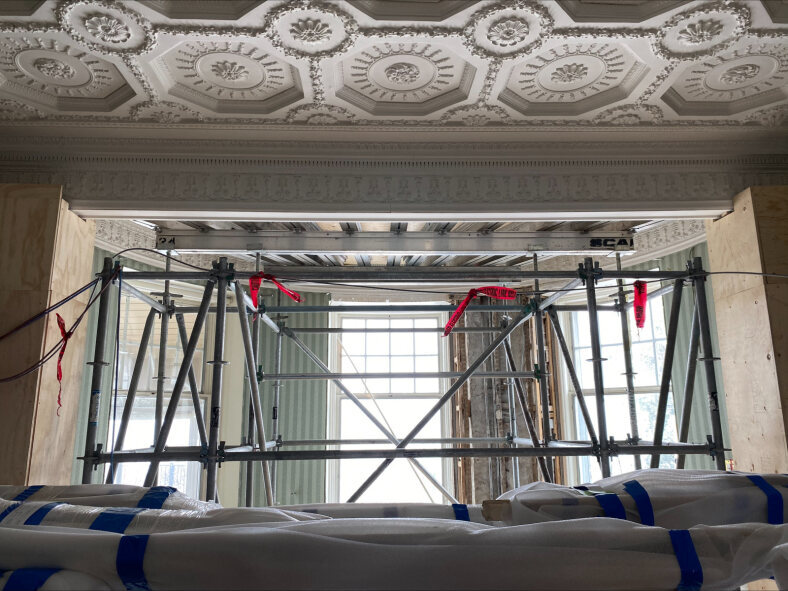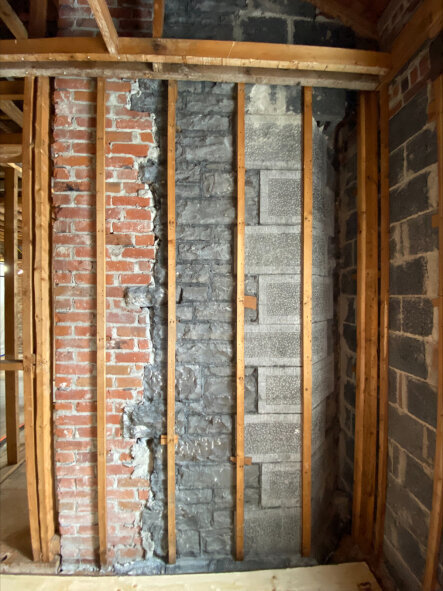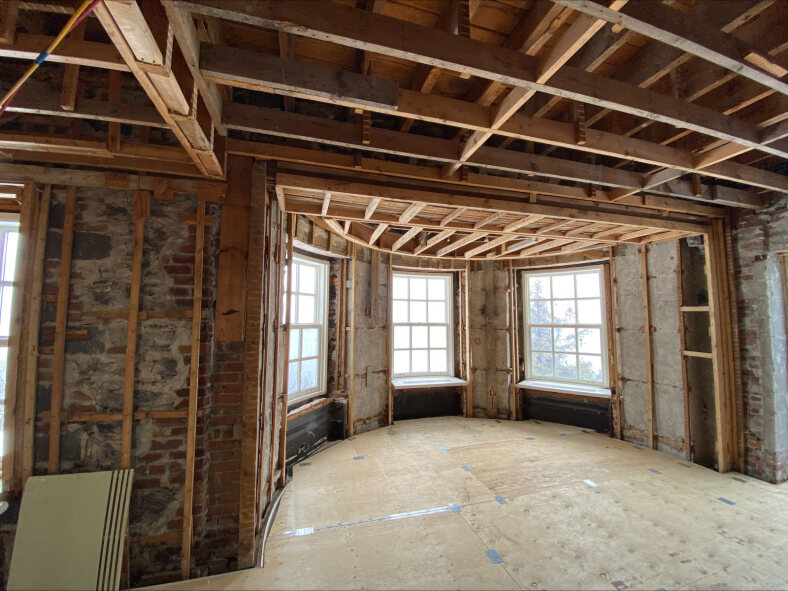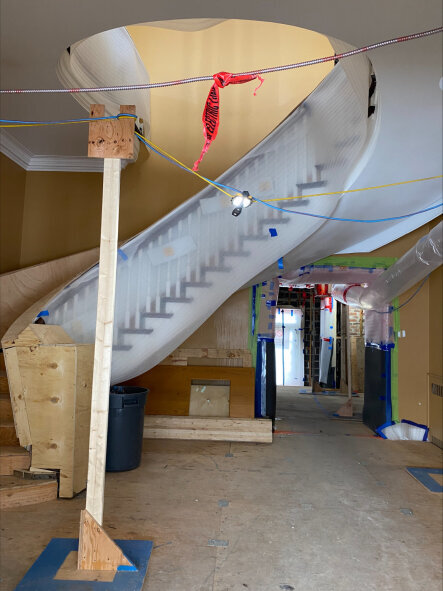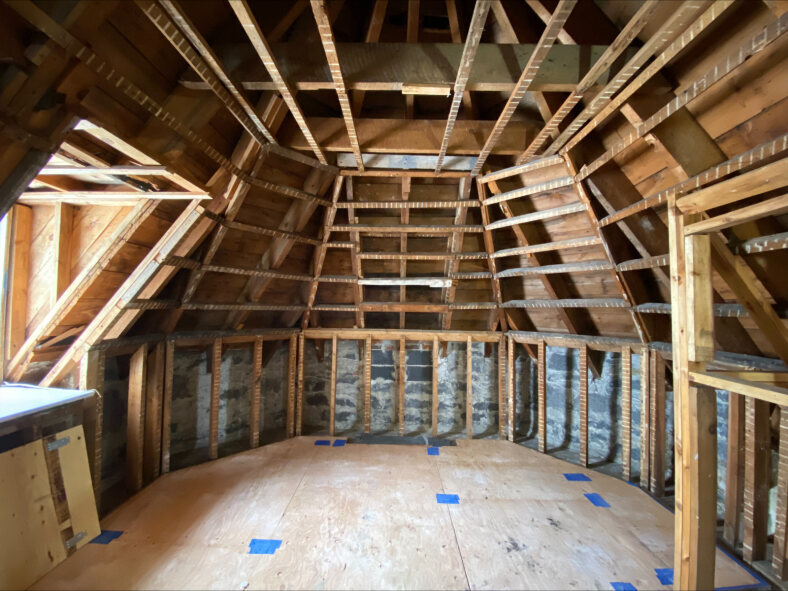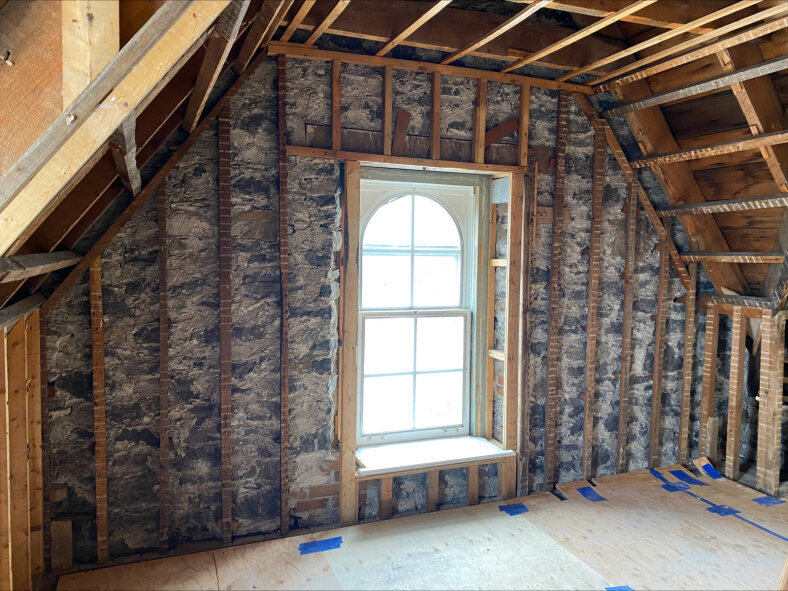In fall 2022, the NCC began the process of closing 24 Sussex Drive, the official residence of the Prime Minister of Canada. The building was closed for health and safety reasons, as well as to protect this classified heritage asset.
With a budget of $4.3M, the abatement and decommissioning project began in May 2023 and will finish in summer 2024. The following elements have been completed:
- careful removal, cataloguing and storing of heritage fabric, such as doors and mouldings;
- abatement of designated substances, such as asbestos; and
- removal of obsolete mechanical, heating and electrical systems;
Remaining work includes insulation of exterior walls and installation of electric heat pumps to protect the building. In the coming months the NCC will also continue its work to ensure the integrity of other assets on the 24 Sussex site, including the building located at 10 Sussex.
A few state areas were excluded from this exercise, as their heritage significance was too important to remove without a decision on the future of the residence. They were protected in situ. The stored heritage fabric elements could possibly be reinstated in the future.
The NCC presented options for the future of the official residence of the prime minister of Canada to the government and is awaiting a government decision. The abatement and decommissioning had to be addressed regardless of any decision made about the future of the residence.
The residence was built in 1868. Its first three owners comprised of successful businessmen and members of Parliament. Since its inception, it has welcomed the political elite of Canada. The residence was later purchased by the federal government and refurbished as an official residence for the prime minister in 1950.
Traditionally, part of the house has been reserved for the use of the Prime Minister’s family. The other part is where the prime minister welcomes official guests for public functions. These rooms are adorned and furnished in a manner suitable to the important public functions they play. The residence is designated as a “classified” heritage building by the Federal Heritage Buildings Review Office (FHBRO).
Place of peace
In the early 19th century, Canada was a magnet for young, ambitious immigrants. One of them was Joseph Merrill Currier from Vermont. He came to Ottawa in 1837 at age 17, and stayed to make a fortune in the lumber trade. In 1868, as a wedding gift to his third wife, Hannah, he constructed a house near the forests and water that had made his fortune. He called the house Gorffwysfa, which means “place of peace” in Welsh.
Politics and business
After the death of Hannah Currier in 1901, the house passed into the hands of William Cameron Edwards, a member of another prominent lumbering family. Like the first owner, Edwards was both a successful businessman and a prominent politician. From 1893 on, his company owned all the mills east of Rideau Falls, eventually turning them into an important wood-manufacturing complex. Edwards also served as a member of Parliament from 1891 to 1900, after which he was appointed senator. When Edwards died in 1921, the house eventually passed on to his nephew, Gordon Edwards, who later became a member of Parliament for Ottawa in 1926.
Expropriation
The battle to bring 24 Sussex into public hands was long and hard-fought. By 1943, the federal government owned almost all the land stretching along the Ottawa River – from the French Embassy to Earnscliffe, the former home of Sir John A. Macdonald. There were fears at the time that the shoreline would be “commercialized,” which the government wanted to prevent at all costs. In 1943, an eviction notice was served to Gordon Edwards, who spent the last few remaining years of his life disputing the order. The government won the dispute, but even after the courts settled the matter in 1946, it seemed uncertain as to what to do with the house.
In 1950, a decision was finally taken to refurbish the property as an official residence for the prime minister. This was an era of rampant “modernism,” and during the renovations, many Victorian features of the house — both inside and out — were removed: including the bay windows, wood paneling, several of the fine fireplaces and even the elaborate wooden trim.
Official life
The last thing Prime Minister Louis St. Laurent wanted in 1950 was to move in the official residence. He eventually consented, as long as he could continue to pay rent (a practice that continued until 1971). Since then, the house has been occupied by a succession of government leaders, including John Diefenbaker, Lester B. Pearson and Pierre Elliott Trudeau. The list of dignitaries who visited the house is also impressive, including Sir Winston Churchill, Queen Elizabeth II, and John and Jacqueline Kennedy, just to name a few.
Today, 24 Sussex is the official residence of the prime minister of Canada. Since 1988, the NCC has managed it.
The house is divided into two principal areas: private and state. The private area, which is essentially the family quarters, consists of bedrooms, sitting areas and other rooms to accommodate private activities. The state area is used for official functions.
The site includes 2.15 hectares (5.3 acres) of grounds, one main building, as well as another small building at 10 Sussex Drive, a pool house and two security guard kiosks.
The main building has 34 rooms and covers approximately 1,115 square meters (12,000 square feet). The building at 10 Sussex Drive was originally a coach house/ caretaker’s house.
The main residence is not currently occupied by the Prime Minister of Canada, who now resides on a temporary basis at Rideau Cottage on the Rideau Hall grounds.
Our work at 24 Sussex Drive is part of a broader long-term program to preserve, maintain and restore all of the official residences.
In June 2021, we released the NCC’s Official Residences of Canada: Asset Portfolio Condition Report. This document details the investment needed to restore Canada’s official residences to optimal condition.
The report deemed both the main residence and the caretaker’s house (10 Sussex Drive) to be in critical condition. The report also identified the main residence as a high priority for rehabilitation work, needing an estimated $36.6 million in deferred maintenance. This amount does not reflect work to meet new building codes and legislative requirements.
The proposed work includes the following:
- Extensive recapitalization
- Abatement of hazardous materials
- Retention of certain heritage components
- Improvements to the building envelope
- Replacement of mechanical and electrical systems
- Construction of universally accessible entrances and washrooms
The federal government is assessing options for the future of the Prime Minister’s official residence.
